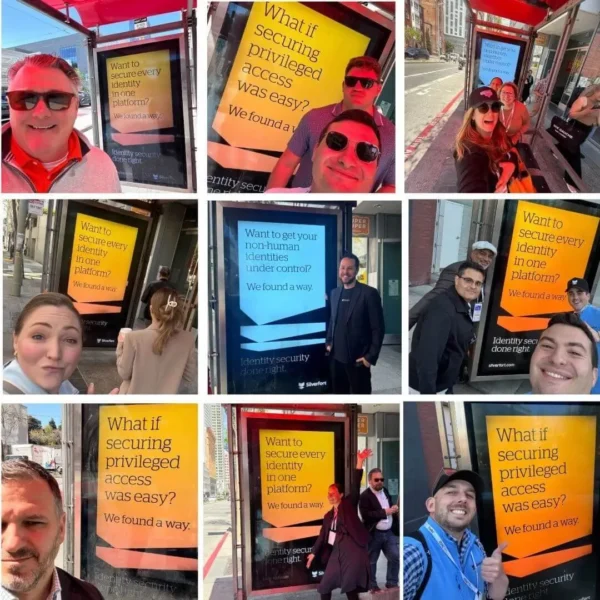The Tech Leader’s Guide to Positioning That Actually Positions
Every tech leader has felt that moment when your breakthrough feature becomes everyone’s baseline. If you have built your brand on that feature, congratulations; you have just become a commodity. This is the risk when product positioning and brand positioning get blurred. The smartest tech leaders keep them separate.
The Distinction That Moves Markets
Product positioning defines fit and fight: where your solution exists, who it serves, and how it wins now. It is the sharpened edge you bring to a specific competitive moment.
Brand positioning is about meaning and momentum. It defines the emotional territory you claim, the belief you champion, the purpose that drives you, and the North Star that endures through each release cycle. It is why you exist and why people should follow you.
Mixing them does not create synergy. The result is a house of cards; impressive at first, but quick to collapse under pressure.
Why Tech Keeps Getting This Wrong
Tech has a logic bias. We love specs, comparisons, and charts that say faster, cheaper, or more secure. (We also love a MQ. Guilty.) In categories where feature advantages evaporate quarterly, a brand built on features is brand built on melting ice. On the other side, a lofty anthem with no product truth is just noise. When your brand says forever and your roadmap says next quarter, customers feel the gap.
The Synergy of Separation
The best tech companies keep product and brand positioning distinct, then make them work together.
Product positioning provides proof. Every feature, launch, and success story becomes evidence for your greater promise.
Brand positioning supplies context. As you expand or pivot, the brand keeps customers oriented and invested.
Nvidia is a prime example. Product positioning centers on GPUs that outperform for gaming and high-performance compute. Brand positioning presents Nvidia as the engine of the AI revolution. Today, Nvidia is the heartbeat of an industry, powering everything from autonomous vehicles to generative AI.
Snowflake’s product positioning focuses on cloud-native data warehousing with separate compute and storage. The brand positioning frames it as the Data Cloud, turning infrastructure into a movement about connecting data. They did not just win a category; they named one.
Databricks defines its product as a unified data and AI platform built on open lakehouse architecture. Its brand makes the bigger promise: democratizing data intelligence. Product credibility through open source, brand credibility through inclusion.
OpenAI keeps product and brand clear. Product positioning is about models that outperform. Brand positioning is about shaping the responsible, powerful future of AI. Even those who never code know what OpenAI stands for.
BlackBerry is the cautionary tale. Its secure, enterprise-ready smartphones once dominated until the market moved on. The brand story was never bigger than the product, and when the feature edge dulled, the brand faded too. If you stand only for a product, you fall with it.
Rational Markets, Emotional Buyers
In B2B, people make high-stakes decisions under pressure. They want partners, not just platforms; confidence, not just specs. Emotion does not replace logic. It focuses it. When a CTO chooses Snowflake, they’re buying performance. But they’re also buying confidence that their data strategy won’t need defending in two years.
Architecture Without Hand Waving
Here is a practical way to align, keeping product and brand distinct:
- Carve out the brand territory. Name the change you exist to make and the feeling you deliver. Write it so a human would agree, not a committee. If it sounds generic, revise it.
- Define the product battles. For each product, specify whom it is for, whom it competes against, and why you are the right choice now. Make the competitive choice clear.
- Build two bridges from brand to product, translate the promise into proof pillars; from product to brand, roll up feature wins into the promise.
- Instrument both layers. Track pipeline, adoption, and win-loss at the product level; track advocacy, affinity, and pricing power at the brand level. Different dashboards, shared decisions.
What This Looks Like
Snowflake owns separate compute and storage. But it also owns the Data Cloud. Nvidia makes GPUs. But it is the engine of AI. One wins quarters. The other wins decades.
The Transformation Imperative
Tech loves disruption. Advantage now comes from coherence, evolving products quickly without losing the plot. Product positioning is how you win today. Brand positioning is why customers choose you after competitors copy everything.
Review your current positioning. If it sounds like everyone else in your category, you don’t have positioning–you have a participation trophy.
Write the brand positioning that your competitors cannot say. Then launch the features that prove it.
In technology, real strength is found in the handshake between conviction and capability, proven release after release.











